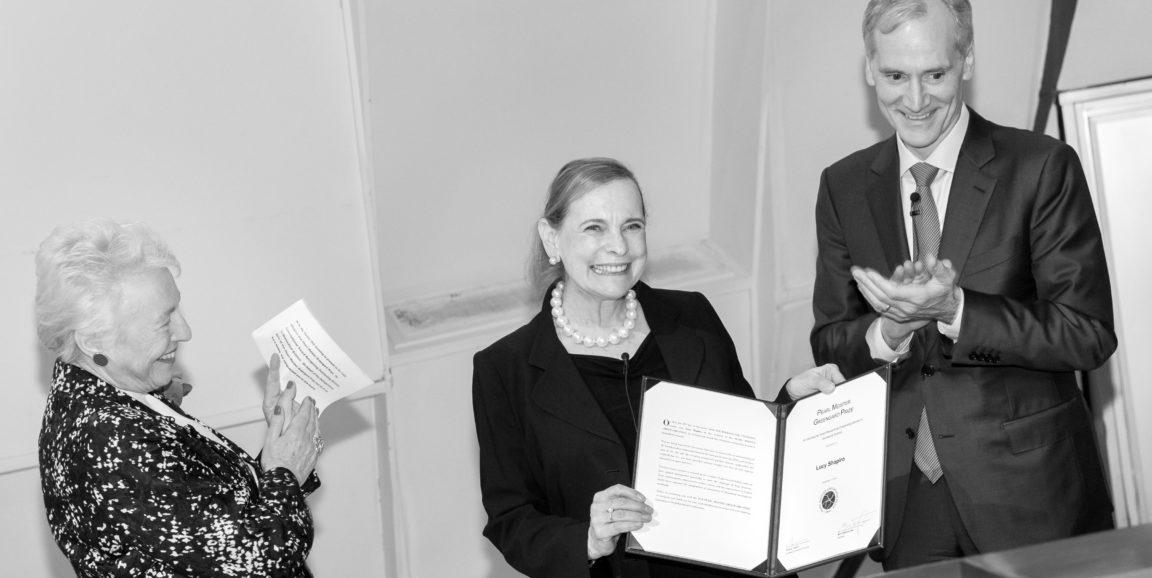The trajectory of Lucy Shapiro's path from art to science might not seem naturally congruent, at first. But, as she told The Scientist in a profile this month, her passion for both -- and the influence of her high school biology professor -- prompted her to double major in biology and fine arts at Brooklyn College.
As Shapiro, PhD, told the publication, she confidently convinced an apparently skeptical Brooklyn College chemistry department chair that she should be allowed to enroll in an honors organic chemistry, despite having taken no college chemistry courses, because, "Well, I'm smart."
And that's when the deep and lasting connections between her two passions revealed themselves:
During the class, Shapiro says, she fell in love with the spatial properties of organic molecules, and she found she had a knack for visualizing them in three dimensions -- in part, she says, because of her training as a painter. 'That course changed my whole life,' Shapiro says. 'I thought that organic chemistry was simply beautiful, and it was the impetus for my becoming a scientist.'
The confidence and poise Shapiro showed in her encounter with the chemistry department chair is something she says she's always possessed. It's part of what drove her to take on her first faculty position, just months after completing her PhD at the age of 27, and later to build a new department of developmental biology at Stanford University.
'If you are confident in what you are talking about, and your science is excellent, there is no need to be intimidated by anyone,' says Shapiro. 'This is particularly important for women in science.'
Shapiro ultimately went on to pursue a PhD in molecular biology at Albert Einstein College of Medicine and, later, to conduct groundbreaking scientific research that advanced the understanding of stem cell function and developmental biology.
From the piece:
Shapiro was a unique thinker from the start of her scientific career: She saw the cell as an integrated system in which biochemistry and genetics are completely interconnected with a living, three-dimensional structure... She was among the researchers who established the field of systems biology, and she brought Caulobacter crescentus, a quirky single-celled bacterium with a flagellum at one end and a stalk at the other, into the limelight as an important model system... Her work led her to launch a company that developed a successful anti-fungal drug and a novel eczema treatment.
Shapiro now directs the Beckman Center for Molecular and Genetic Medicine. Along her path, she served as an adviser to President Bill Clinton and to Secretary of State Condoleezza Rice during George W. Bush's administration. When she was named a 2011 National Medal of Science recipient, a National Science Foundation released a video that featured her grandchildren. In it she advised: "Follow your passion, and you'll have a rich and worthwhile life."
Photo of Shapiro winning the Pearl Meister Greengard Prize by Scott Rudd; Marc Tessier-Lavigne, president of Stanford, is also shown




